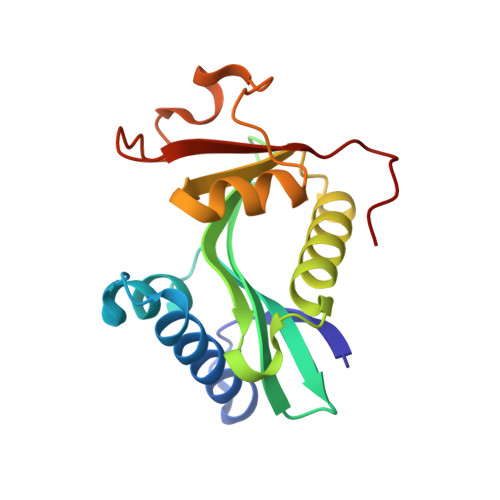Molecular basis for GCN5/PCAF histone acetyltransferase selectivity for histone and nonhistone substrates
Poux, A.N., Marmorstein, R.(2003) Biochemistry 42: 14366-14374
- PubMed: 14661947
- DOI: https://doi.org/10.1021/bi035632n
- Primary Citation of Related Structures:
1Q2D - PubMed Abstract:
Histone acetyltransferase (HAT) proteins often exhibit a high degree of specificity for lysine-bearing protein substrates. We have previously reported on the structure of the Tetrahymena Gcn5 HAT protein (tGcn5) bound to its preferred histone H3 substrate, revealing the mode of substrate binding by the Gcn5/PCAF family of HAT proteins. Interestingly, the Gcn5/PCAF HAT family has a remarkable ability to acetylate lysine residues within diverse cognate sites such as those found around lysines 14, 8, and 320 of histones H3, H4, and p53, respectively. To investigate the molecular basis for this, we now report on the crystal structures of tGcn5 bound to 19-residue histone H4 and p53 peptides. A comparison of these structures with tGcn5 bound to histone H3 reveals that the Gcn5/PCAF HATs can accommodate divergent substrates by utilizing analogous interactions with the lysine target and two C-terminal residues with a related chemical nature, suggesting that these interactions play a general role in Gcn5/PCAF substrate binding selectivity. In contrast, while the histone H3 complex shows extensive interactions with tGcn5 and peptide residues N-terminal to the target lysine, the corresponding residues in histone H4 and p53 are disordered, suggesting that the N-terminal substrate region plays an important role in the enhanced affinity of the Gcn5/PCAF HAT proteins for histone H3. Together, these studies provide a framework for understanding the substrate selectivity of HAT proteins.
Organizational Affiliation:
The Wistar Institute, Philadelphia, Pennsylvania 19104, USA.
















